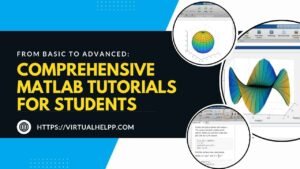Linear programming is a powerful mathematical technique used for optimization, where the goal is to achieve the best outcome given certain constraints. It’s widely applicable in fields like economics, engineering, logistics, and more. However, many students find it challenging due to its abstract nature and complex calculations. This guide aims to provide comprehensive homework help for linear programming, covering essential concepts, methods, tips, and resources.

Table of Contents
ToggleUnderstanding the Basics
Linear programming (LP) involves optimizing a linear objective function, subject to a set of linear inequalities or equations called constraints. Key concepts in LP include:
- Objective Function: The function that needs to be maximized or minimized.
- Constraints: The limitations or requirements given in the problem.
- Feasible Region: The set of all possible points that satisfy the constraints.
Common terminologies include variables, coefficients, linear inequalities, and feasible solutions.
Real-World Applications
Linear programming is not just theoretical; it has numerous real-world applications:
- Business Optimization: For maximizing profits or minimizing costs.
- Supply Chain Management: Optimizing the logistics of supply chains.
- Engineering and Design: Efficient resource allocation in projects.
- Economics and Finance: Portfolio optimization and economic planning.
Steps to Solve Linear Programming Problems
Solving LP problems involves several steps:
- Define the Problem: Clearly state what needs to be optimized.
- Formulate the Objective Function: Create a linear equation representing the objective.
- Identify Constraints: List all the limitations as linear inequalities or equations.
- Graphical Method: Useful for problems with two variables.
- Simplex Method: A more advanced algorithm for larger problems.
Graphical Method Explained
The graphical method is a visual way to solve LP problems with two variables:
- Plotting Constraints on a Graph: Draw each constraint as a line on the graph.
- Identifying the Feasible Region: The area where all constraints overlap.
- Determining the Optimal Solution: The point in the feasible region that maximizes or minimizes the objective function.
Simplex Method Simplified
The Simplex method is a systematic, tabular approach to solving LP problems:
- Set up the initial simplex tableau.
- Identify the entering and leaving variables.
- Perform row operations to find the new tableau.
- Repeat until an optimal solution is found.
A practical example can illustrate how each step is carried out.
Common Challenges and Mistakes
Students often encounter difficulties such as:
- Misunderstanding the problem requirements.
- Incorrectly formulating constraints.
- Errors in graph plotting and interpreting results.
- Misapplying the Simplex method steps.
Tips for Tackling Linear Programming Homework
- Break Down the Problem: Understand each part of the problem separately.
- Double-Check Your Formulations: Ensure constraints and objective functions are correct.
- Use Online Solvers and Tools: Leverage technology to verify your solutions.
- Practice with Past Problems: Familiarize yourself with different types of problems.
Resources for Extra Help
Various resources can assist with LP homework:
- Online Tutorials and Courses: Platforms like Coursera and Khan Academy.
- Textbooks and Reference Materials: Books dedicated to LP and optimization.
- Educational Websites and Forums: Math Stack Exchange, Chegg, etc.
- Tutoring Services and Apps: Personalized help through platforms like our tutoring app.
Leveraging Technology
Modern technology can simplify LP learning:
- Software Tools: Excel, MATLAB, and LINDO for solving LP problems.
- Mobile Apps: Apps that offer tutorials and problem-solving capabilities.
- Online Calculators: Websites providing LP problem solvers.
Case Studies and Examples
Examining real-life case studies and solved examples can deepen understanding:
- Real-Life Case Studies: Examples from industries like logistics and finance.
- Step-by-Step Problem-Solving Examples: Detailed walkthroughs of solving LP problems.
- Analysis of Solved Problems: Insights into common mistakes and correct approaches.
Benefits of Seeking Professional Help
Professional help can be invaluable:
- Personalized Guidance: Tailored help for individual learning needs.
- Time Management: Efficient use of study time.
- Improved Understanding and Grades: A better grasp of concepts and higher grades.
Features of a Good Online Tutoring Platform
When choosing an online tutoring platform, look for:
- Qualified Tutors: Experienced and knowledgeable in LP.
- Interactive Learning Tools: Tools that enhance understanding.
- Flexibility and Convenience: Sessions that fit your schedule.
- Positive Student Feedback: Reviews and testimonials from other students.
Conclusion
Linear programming is a valuable skill with wide-ranging applications. While it can be challenging, the right strategies, tools, and resources can make mastering it much more manageable. Don’t hesitate to seek help, practice regularly, and utilize available technology to improve your understanding and performance in linear programming.
FAQs
- What is the difference between the graphical and Simplex methods? The graphical method is a visual approach suitable for two-variable problems, while the Simplex method is an algorithm that handles larger, more complex problems.
- How can technology aid in learning linear programming? Technology provides tools like software, apps, and online calculators that simplify problem-solving and offer interactive learning experiences.
- What are some common real-world applications of linear programming? Linear programming is used in business optimization, supply chain management, engineering design, and financial planning.
- How can I find a good online tutor for linear programming? Look for platforms that offer qualified tutors, interactive tools, flexible schedules, and positive student feedback.
- Are there any free resources available for learning linear programming? Yes, there are many free resources such as online tutorials, educational websites, forums, and textbooks available for learning linear programming.





